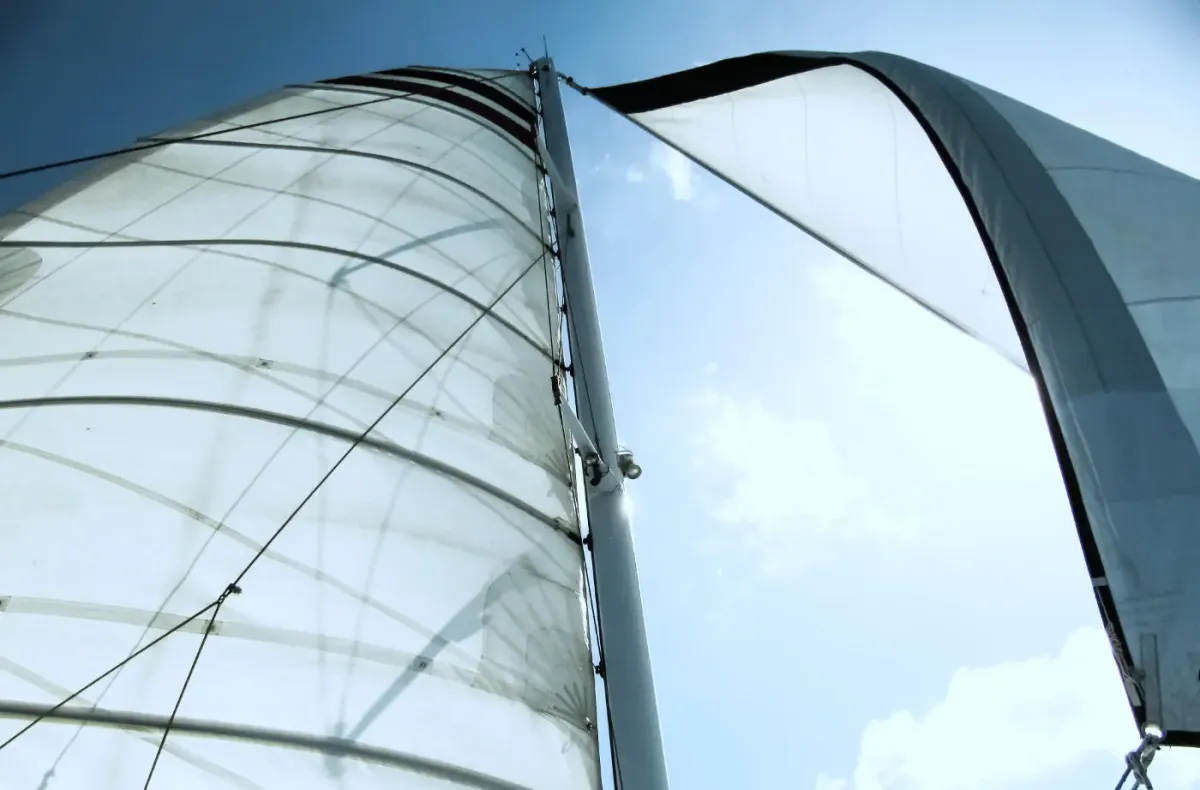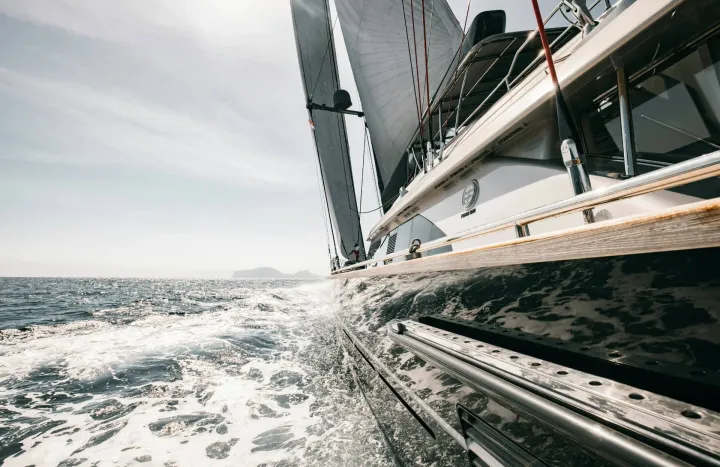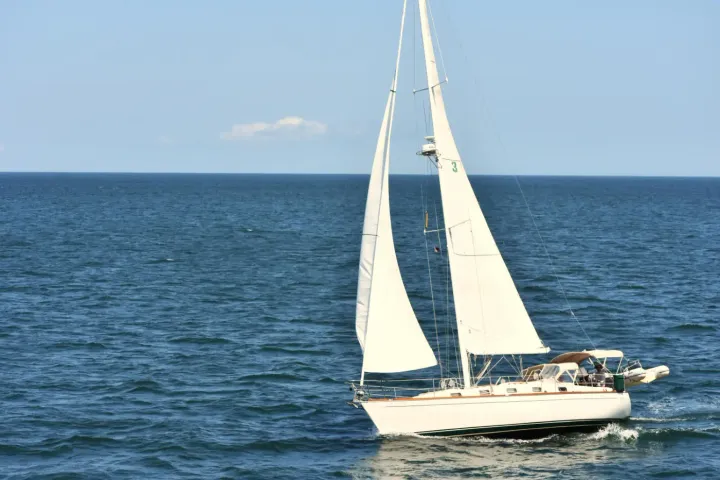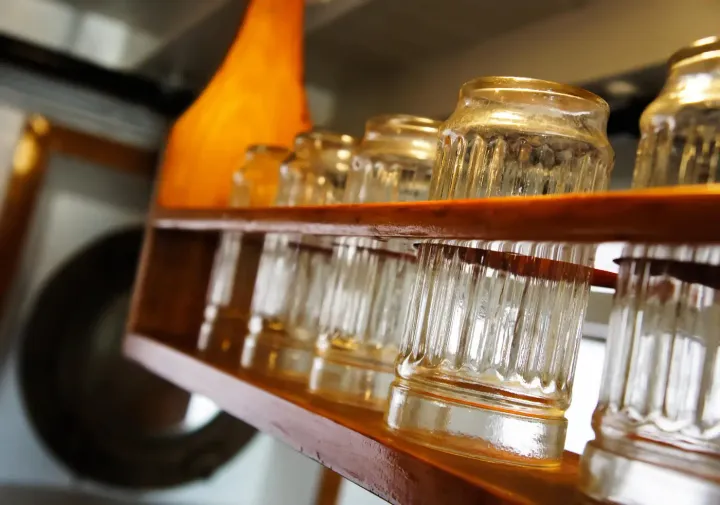What are the differences between the spinnaker and genoa sail and when should each be used on your sailboat?
Typically sailboats have one mainsail and one head sail. Most sailboats use a Bermuda sloop configuration with the sails set fore and aft of the ship. Different sails are needed when sailing in different conditions. What is the difference between a Spinnaker and a Genoa sail?
A spinnaker is a lightweight nylon sail used for sailing in the direction of the wind. Spinnaker sails are attached at three points and are typically brightly colored. The genoa is a large jib sail that overlaps the main sail when viewed from the side. It has a large surface and is mainly used in light to moderate winds.
Below we will compare the two sails and find out which sail is best used for each sailing condition.
Spinnaker
The spinnaker sails are large colorful sails that run off the front of the boat. These lightweight nylon sails have a large area and are used when traveling with the wind. They are used when sailing downwind and are capable of moving the sailboats quickly with just a light wind or medium breeze.
There are two main categories of spinnaker sails; symmetric and asymmetric. The asymmetric spinnakers have two sheets and don’t require a spinnaker pole, it is fixed to the bow. The asymmetric sails are less suited for downwind sails and need to be zig-zagged sailing downwind. Symmetrical spinnakers require the spinnaker pole for stabilization. They use both lifts and drag to move the boat in the direction of the wind.
Genoa
The genoa is a large jib sail that extends past the mast and overlaps the mainsail. It can also be referred to as an overlapping jib. It is used on boats with a single mast or twin mast vessels such as ketches or yawls.
Their larger surface area is used in light and moderate winds to help increase speed. In higher winds, they can be used instead of a mainsail or substituted for a smaller jib.
All genoa sails are asymmetrical, when divided in half each side isn't a mirror image. They are attached with one corner allowed to roam to keep the sail under control.
The genoa sail is categorized by its area relative to the foretriangle. Number 1 genoas are normally 155% larger but can be as large as 180%. Number 2 can range in size from 125% up to 140%.
Why are there Different Sails?
Having and using the correct sail on your sailboat is incredibly important. Different sails are needed to take advantage of the different wind conditions. Some sails will not be able to take full advantage of windy conditions. Larger and heavier sails in light winds will not be able to propel the vessel forward and just flap in the breeze. You will need to use the correct sail for the conditions.
Using a mainsail in light to medium winds will not be able to sufficiently power your sailboat and you will need a lighter sail to catch the wind and propel your boat. In stronger winds, the mainsail will increase the heeling of your sailboat.
What Sail to Use and When?
On most sailboats, the 15-knot wind is the maximum limit to use a spinnaker. Winds over 20 knots are generally unsafe to use the spinnaker safely or effectively. Due to their large surface area, you will need to be careful of the conditions you choose to use this sail in. Strong winds can put you and your passengers at risk.
Racing boats can use heavy spinnakers to help achieve higher speeds.
You should use a genoa if you are sailing in light or medium winds when your boat is at a straight run sail. Since they are so large, Genoa sails can cause your boat to pick up significant speed when heading downwind. It may be safer on extremely windy days to use the genoa sail and trim it to catch the wind you need heading downwind.
Conclusion
The bright and colorful sail you see in the front of the sailboat is the spinnaker. It is used in light to medium winds to help propel your vessel quickly. There are two main types of spinnakers; asymmetrical and symmetrical. The asymmetrical spinnakers do not require a spinnaker pole while the symmetrical ones do. It shouldn’t be used in heavy winds except for race boats.
The genoa is a large jib sail that overlaps the mainsail when viewed from the side. It has a large surface and its size is usually indicated by how much larger it is over the mainsail. It is used to travel upwind and can be used downwind if there is a significant breeze.
In substantial winds, they can be used in place of a mainsail, or substituted for a smaller jib sail.



